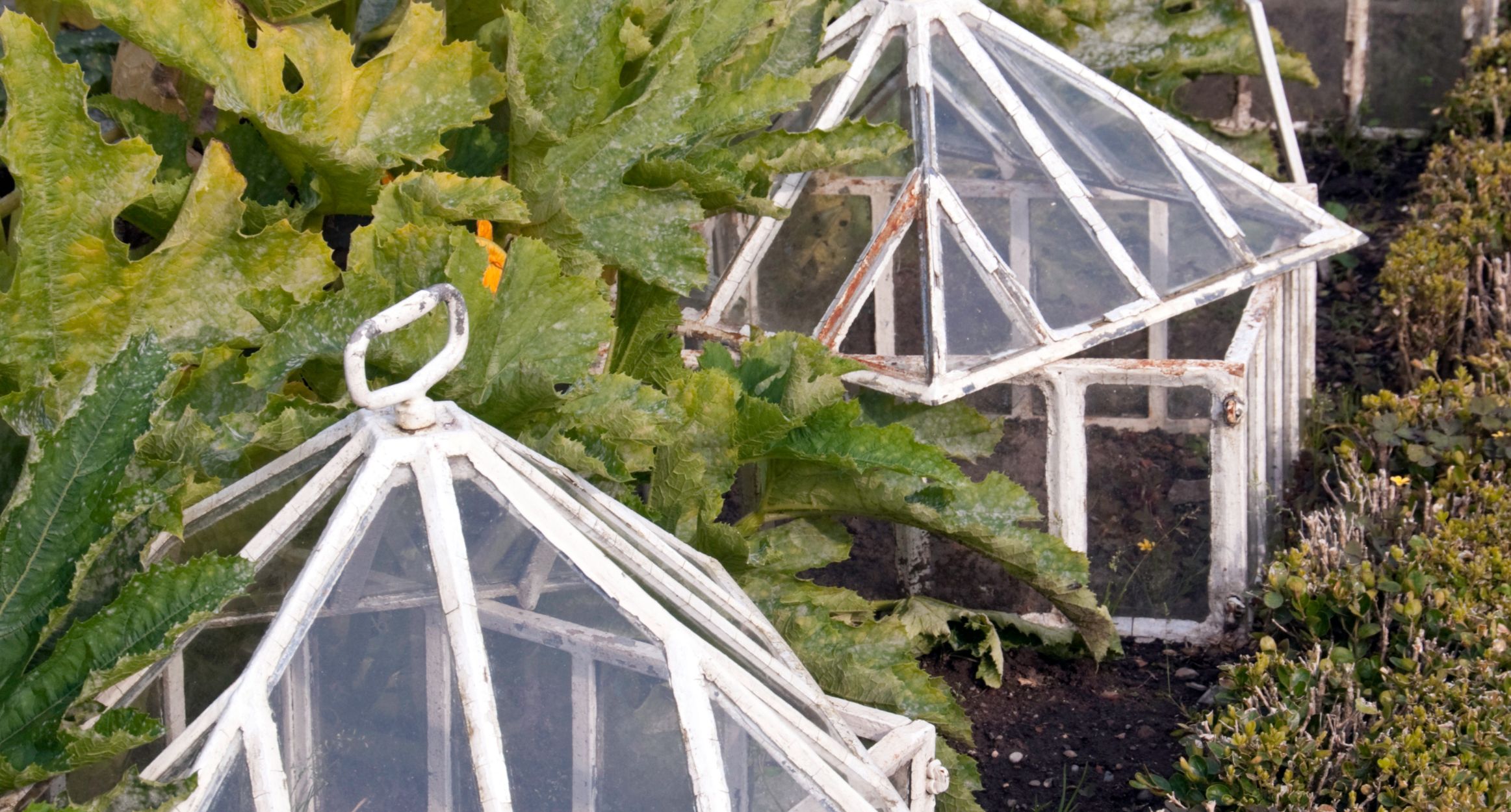Extend the Life of Your Herbs

Don’t give up on your gardens just yet!
These 5 alternative approaches will have your herb garden thriving all winter long.
Just because the temperature has changed doesn’t mean your green thumb has to hibernate! You just need to modify your approach to stay gardening throughout the cold season.
Are you ready to start producing flavorful foliage all winter long?
Cold-resistant herbs like chives, mint, oregano, parsley, sage, and thyme tend to withstand the cold better than some of their counterparts such as rosemary. Regardless, any of these can survive when they follow these five steps.
-
Encase your herbs using cold frames or cloche.
Cold frames and cloches protect your herbs from the cold by encasing the entire plant. The enclosure traps the heat rising from the soil, raising the temperature several degrees when it otherwise would be too cold. This can promote further growth of your herbs.
What is a “cold frame” or a “cloche”? A cold frame is a house-shaped frame with glass panels that slope downward in position that capture the most sunlight for the enclosed plant. Cloches tend to be smaller in size and significantly more portable. Traditionally they are glass and bell-shaped. However, their higher price tags have encouraged the DIYers to create their own using cut-off milk jugs or soda bottles to enclose each plant. If you choose the DIY approach, don’t forget to push the edges about an inch or two below the soil to prevent them from blowing away. You can purchase plastic ones here.
-
Cover in mulch or straw.
Like a warm blanket, a thick layer of mulch or straw will allow your herbs to continue growing in the cold season. This approach works best in places that don’t experience extreme cold. When you would like to harvest, simply pull back the mulch or straw blanket, cut the herbs you need, and then return the mulch/straw blanket to its place. Keep in mind your herbs will not produce at the same rate as they did during the warmer seasons. If a small layer of snow falls atop the mulch/straw blanket it will act as additional insulation. When spring returns you can turn the mulch/straw blanket into the soil with little to no waste.
-
Repot your herbs and transport them inside to a greenhouse or sun porch.
If you are growing your herbs in the ground one of the most popular options for keeping them alive and producing is to repot them and move them somewhere warmer. The optimal way to accomplish this is by first trimming them back to about an inch tall making them easy to transport. You can use the trimmings and if there are extra follow step 5. Using a sharp shovel separate them at their bases ensuring that the roots of each one will fit into its container with well-draining planting mix. They will grow back when replanted in the garden in the spring.
-
Grow herbs in your sunny window.
Herbs can add that extra greenery to your kitchen window. Make sure they receive at least six hours of sunlight a day. If not, you can use artificial light to supplement, keeping in mind it takes about 14 hours of artificial light versus the six hours of sunlight per day. Keep your plants in an atmosphere where the temperature ranges between 60 and 70 degrees Fahrenheit. Use a well-draining potting mix and water often.
-
Extend life in a cup of water.
Some plants don’t need soil at all. You can place a cut of basil, mint, sage, oregano, thyme, and green onions in a cup of water on your window sill and they will begin to produce roots and grow new leaves. This is a great way to get extra from your harvest.
Be sure to remove lower leaves to keep them from being submerged in the water.
Keep in mind all plants will do better outside but these ones are a great alternative. Their leaves might be thinner and a tad less flavorful, but they will still be fresh for weeks to come.
If you liked this article, you can find other useful household articles by searching our blogs. Keep reading here.

 Facebook
Facebook
 X
X
 Pinterest
Pinterest
 Copy Link
Copy Link